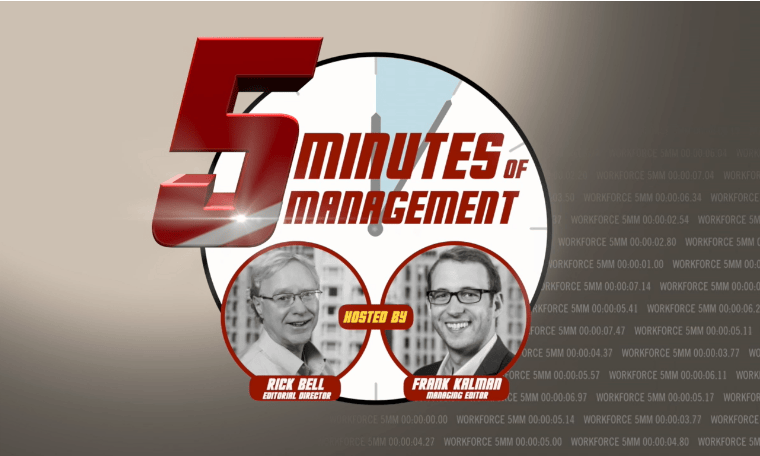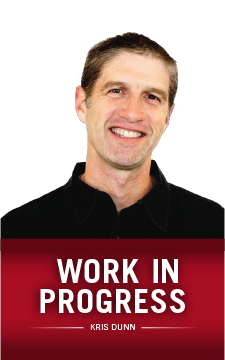
It’s widely recognized that the federal government’s H-1B visa program needs a change. The Trump administration’s executive order draft aims at overhauling work-visa programs and affecting hiring practices, which could impact how tech companies recruit tens of thousands of employees. Currently, it allows them to bring in high-skill workers when they can’t find qualified local workers, and the U.S. permits 85,000 H-1B visas annually for highly technical positions in STEM fields.
Allegations have sparked controversy that companies are abusing the program to bring in cheaper workers for jobs that otherwise might go to Americans. Legislation plans to prohibit companies who are heavy users of the visa program.
Those supporting the changes believe more jobs will be brought back to local workers, but those opposing argue it will burden employers and make it harder for them to access skilled talent, especially highly educated students from foreign universities — the top recipients of the H-1B visas work in the technology departments of large corporations such as Microsoft Corp., Amazon.com Inc. and Apple Inc., highly sought-after positions. Workforce is keeping a running list of important developments in immigration and H-1B Visas.
Updates
April 21: President Donald Trump’s “Buy American, Hire American” executive order encourages government agencies and businesses to buy American-made products and hire American labor.
April 19: President Donald Trump signed an executive order on the H-1B visa program. The order will favor American companies for federal contracts and reform the visa program for foreign technical workers.
April 5: The Trump administration issued new guidelines for the work visa program. Computer programmers applying for H-1B visas need to prove the jobs require more advanced knowledge and experience than what U.S. workers with similar education or credentials can offer. The U.S. Citizenship and Immigration Services agency issued the change.
April 3: The court’s decision on the Save Jobs lawsuit is extended for another 180 days. The suit concerns H-1B visa holders’ spouses, who can currently work under an H-4 employment authorization when they’ve applied for lawful permanent residence. The Save Jobs suit seeks to take away their right to work.
March 20: There remains a lack of clarity surrounding the upcoming April 3 cap on H1-B visa applications. United States Citizenship and Immigration Services confirmed that it will inform the public when the cap hits. The time window for accepting the applications is still unknown.
March 15: Mayor Rahm Emanuel plans to announce that five of Chicago’s colleges are collaborating to sponsor H-1B visas for 10 to 20 foreign student entrepreneurs. Loyola University Chicago, Northwestern University, Columbia College Chicago, DePaul University and the Illinois Institute of Technology will adopt individual global entrepreneur-in-residence programs. Students can stay in Chicago to build their startups. Universities around the U.S. are in the process of creating similar programs.
March 13: The Trump administration suspended fast-track processing for H-1B visas, making it harder to bring in foreign workers in a hurry. Companies will have to give entry-level jobs to the existing domestic pool of unemployed native and immigrant workers. The policy called for the minimum wage payable to H-1B visa holders to be raised to a level comparable to prevailing wages in the U.S. United States Citizenship and Immigration Services advises that applicants and employers complete paperwork prior to the April 1 H-1B deadline.
March 7: President Donald Trump announced a revised travel ban to take effect March 16 that prevents residents of Iran, Libya, Somalia, Sudan, Syria and Yemen from getting visas. According to senior administration officials, the new ban exempts citizens of these countries who have valid visas to enter the U.S., including those whose visas were previously revoked. President Trump is still open to a merit-based H-1B or visa program.
March 7: Leon Rodriguez, former director of U.S. Citizenship and Immigration Services at the Department of Homeland Security, is joining Seyfarth Shaw’s labor and employment department in Washington, D.C. He offered his insight into immigration reform’s future.
[Read: “After Leading Feds’ Immigration Service, Leon Rodriguez Heads for Private Practice”]
March 3: New bipartisan legislation called the H-1B and L-1 Visa Reform Act was introduced in the House of Representatives on March 2. The bill would eliminate the lottery system in favor of a preference system. It restricts companies from hiring more H-1B employees if 50 percent of their employees are already on H-1B and L-1s. According to CNN, it requires employers to make a “good faith effort” to recruit American workers over foreigners and gives the Departments of Homeland Security and Labor more authority to investigate fraud and abuse.
Feb. 28: President Donald Trump expressed openness to immigration reform in an address to Congress and asked Republicans and Democrats to work together. Trump’s potential bill could grant legal status to millions of undocumented immigrants living in the U.S., according to CNN. It would allow undocumented immigrants who aren’t criminals to live, work and pay taxes in the U.S. without fear of deportation. More details to come.
Feb. 24: A National Association of Software and Services Companies delegation came to Washington, D.C., to engage with members of the U.S. administration on issues like work visas. NASSCOM President R. Chandrashekhar explained to senators and congressmen their contribution in making the American economy competitive through jobs created by Indian IT companies.
Feb. 13: More than 100 workers from Bay Area tech companies protested President Donald Trump’s recent efforts to keep immigrants from entering the country and deport those already here. The rally was centered largely around nontechnical workers, like custodians, cafeteria workers and bus drivers, rather than software engineers and programmers who carry specialty H-1B visas.
Feb. 8: Texas state senators approved Senate Bill 4, which withholds state dollars for sanctuary cities (cities where police fail to enforce immigration laws at the request of federal officials). The bill will not permit officers to search a business solely to enforce an immigration law.
Feb. 7: Junior senators from Arkansas and Georgia, Tom Cotton and David Perdue, proposed a new law to reduce legal immigration. The bill plans to restrict green cards and eliminate the diversity visa lottery — a program that gives visas to countries with low rates of immigration to the United States.
Feb. 8: More than one-third of organizations have been impacted by the travel ban, according to new research by the Institute for Corporate Productivity. A pulse survey of 261 companies revealed 24 percent expect it will have a negative impact on productivity this year (only 3 percent say it will have a positive impact).
Feb. 6: The tech industry braced for another executive order that could hit business hard. Nearly 100 tech companies support a high-profile legal battle opposing President Donald Trump’s Immigration Ban. The brief says, “Immigrants or their children founded more than 200 of the companies on the Fortune 500 list … and employ millions of Americans.” Among the tech companies that signed are Google, Airbnb, Microsoft, Intel, Netflix, Snap, Facebook and Uber.
Feb. 5: The future of Indian tech firms and billion-dollar ideas could be in trouble. At least nine private startups with valuations of $1 billion or higher have a founder of Indian origin. North America is the biggest export market for the country’s $150-billion IT industry, and the possibility of overhauling all American work-visa programs could impact India greatly.
Feb. 1: Sens. Chuck Grassley, R-Iowa, and Dick Durbin, D-Illinois, reintroduced a bill that will eliminate the H-1B visa lottery system. Replacing it would be a preference system awarding priority to foreign students who hold advanced degrees from the U.S. over importing more foreign workers. They will be offered the highest wage for jobs to which they apply.
Jan. 28: A federal court in New York issued a temporary injunction against the federal government’s implementation of portions of the order. The government can’t remove affected individuals from the U.S. just on the application of the order. Removal applies to individuals being sent out of the United States after requesting entry. The order violates the Constitution’s Due Process and Equal Protection Clauses.
Jan. 27: President Donald Trump signed an executive order that “suspends entry” of both “immigrant and nonimmigrant” individuals from the seven countries currently subject to visa waiver restrictions: Iran, Iraq, Libya, Somalia, Sudan, Syria and Yemen. This 120-day hold is an indefinite ban on refugees from Syria. Citizens from the seven Muslim countries are barred from entering the U.S. for 90 days.
Jan. 4: U.S. Rep. Darrell Issa (R-California) introduced legislation backed by multiple Democrats and Republicans that would change the requirements for the H-1B visa program. New standards will turn the four-tier wage system into a three-tier system and make it difficult for employers to access entry-level workers and exploit the program. Employers will pay foreign national workers more than similarly situated U.S. workers.
Mia Mancini is a Workforce intern. Comment below or email editors@workforce.com.






 If you don’t like the answer, you can always change the question. Especially if you have money. Lots of money.
If you don’t like the answer, you can always change the question. Especially if you have money. Lots of money.





 It is the new year, which means it’s time to snap out of our indulgent holiday habits and get back to real-life goals and aspirations.
It is the new year, which means it’s time to snap out of our indulgent holiday habits and get back to real-life goals and aspirations.


 Yoga classes fit into the structure of an employee wellness program. One of Morash’s clients is the Pine Street Inn, an emergency shelter for homeless and displaced people. Last year the inn put together a formal wellness program, and yoga was one of the top options employees sought, said Jayne Hamilton, manager of benefits and employment at the Boston shelter.
Yoga classes fit into the structure of an employee wellness program. One of Morash’s clients is the Pine Street Inn, an emergency shelter for homeless and displaced people. Last year the inn put together a formal wellness program, and yoga was one of the top options employees sought, said Jayne Hamilton, manager of benefits and employment at the Boston shelter.